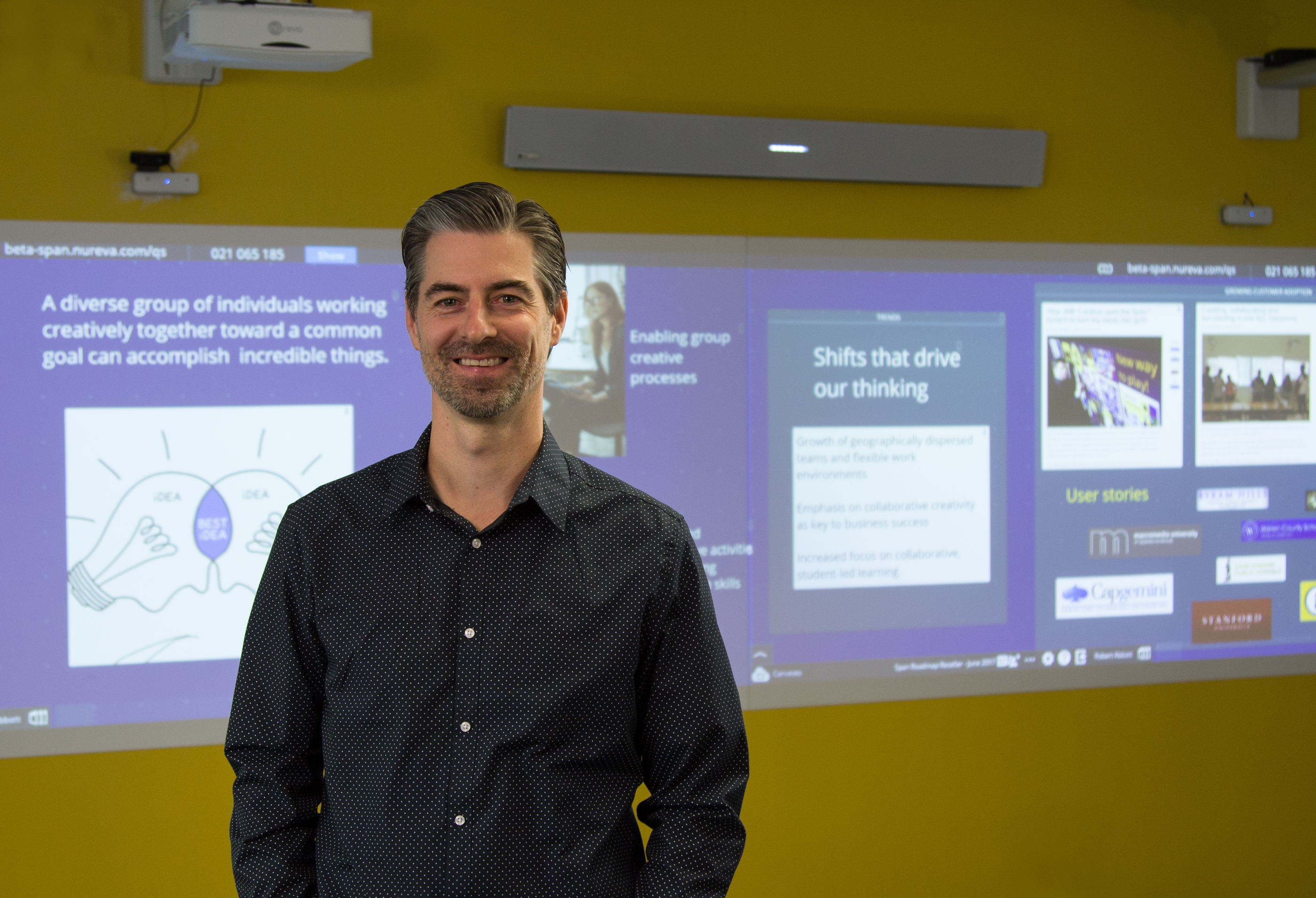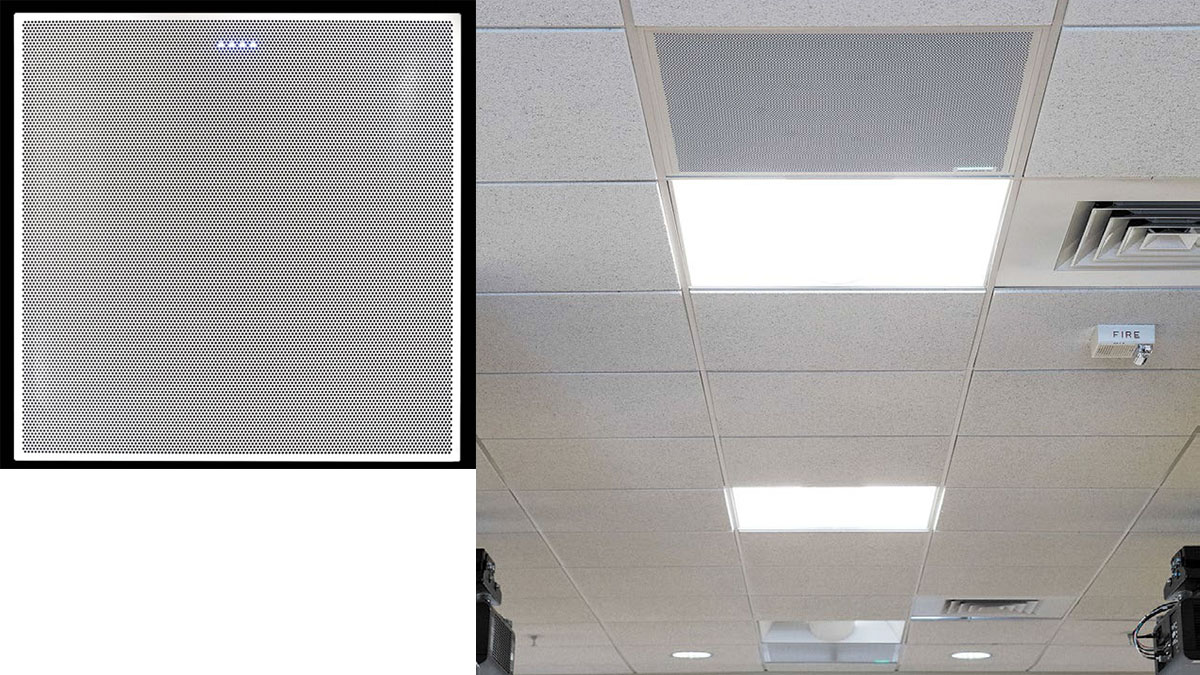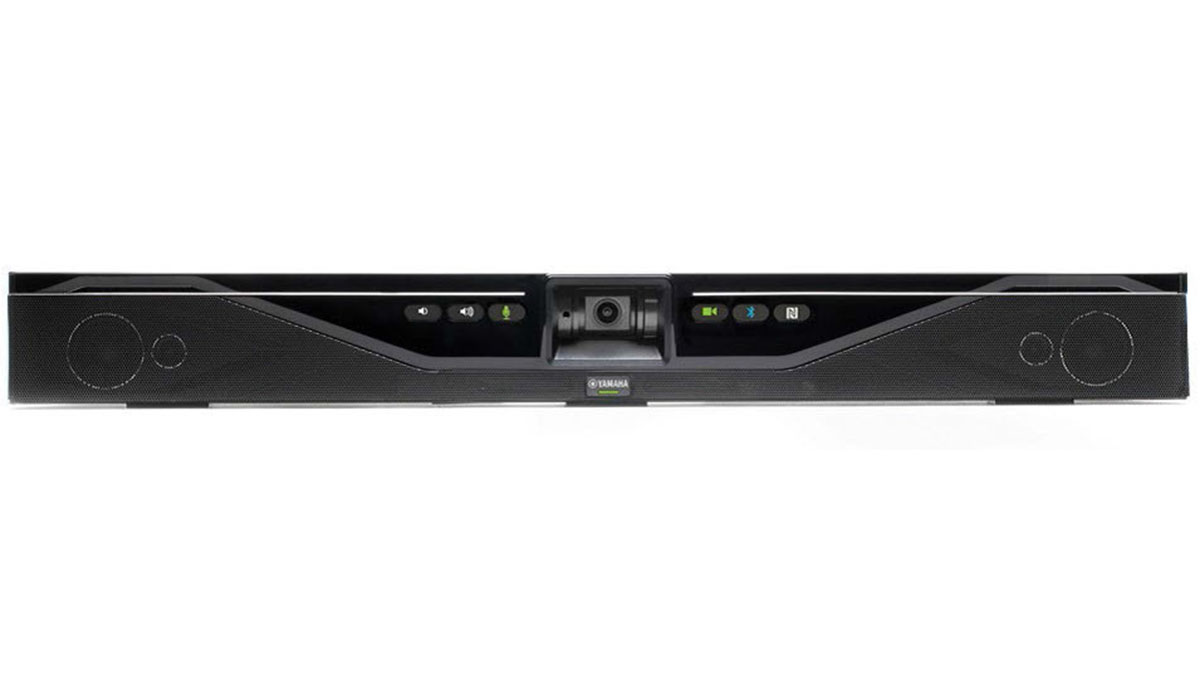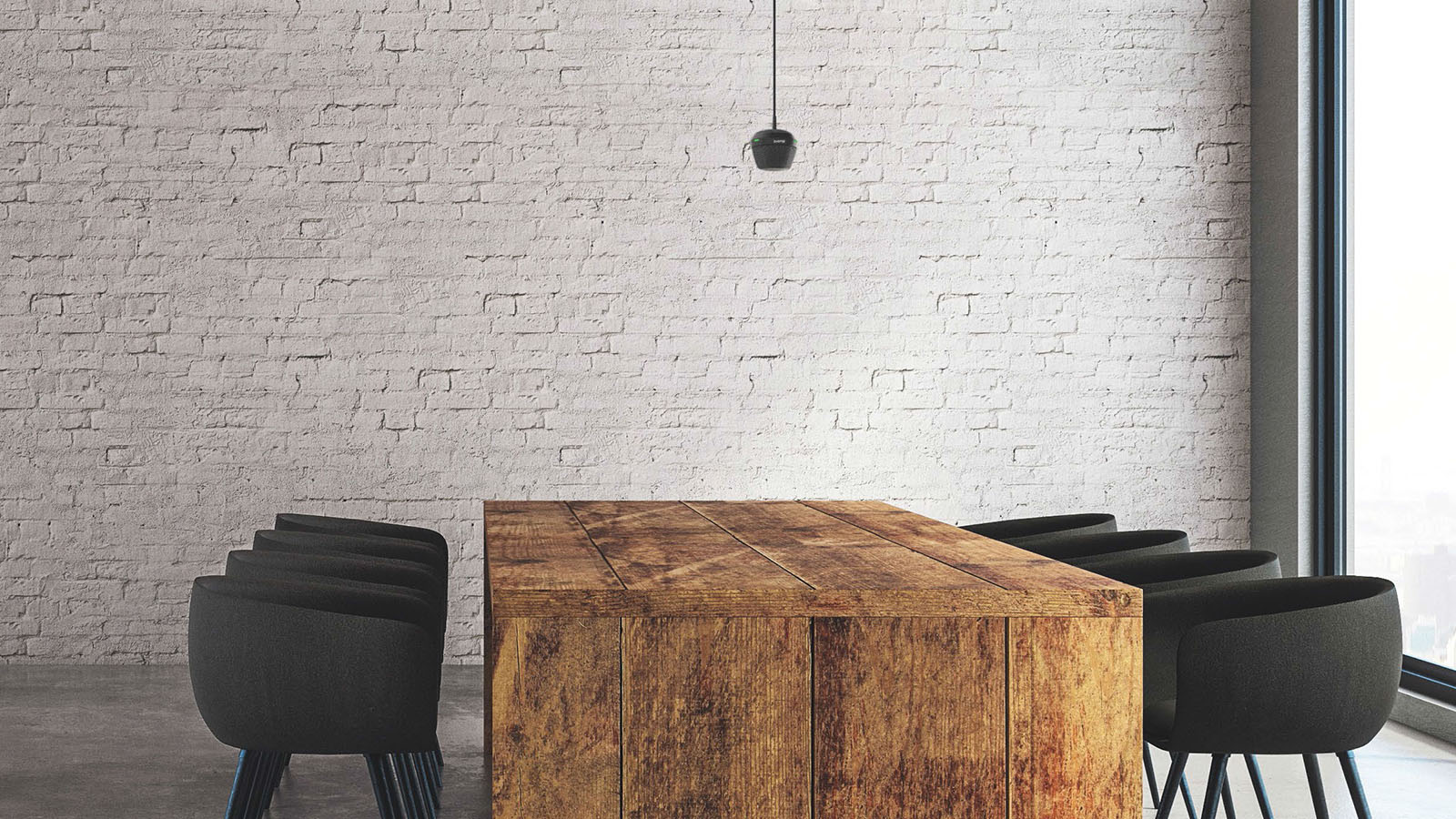As you surely know, today’s workplaces are in flux. Between shifting trends in office layouts and changing philosophies on remote working, the office of 2019 simply doesn’t function like the days of old. Just start with the desks.
“Try to find a new desk phone in the business environment today; it’s nearly impossible,” said Joe Andrulis, executive vice president of corporate development, Biamp. “One of the biggest trends right now is the replacement of the desk phone with unified communications solutions like Microsoft Teams and Google Hangouts. But these tools are optimized for individual use with a headset or built-in speaker and microphone, and we all know the stories about how they just don’t work well in larger spaces like conference rooms and huddle spaces.”
To supply these spaces with professional quality audio, Biamp and several other leading audio companies have developed technologies that automatically track the person speaking, providing precise pickup from a compact device. Called “beamforming” or “beam-tracking,” these developments are transforming how microphones are deployed for meetings rooms.
“Meetings are becoming more active than ever,” Andrulis said. “Rooms are designed to maximize movement and flow to keep employees engaged and increase creativity. This type of environment demands microphones that dynamically adjust as participants move around, lean back, or change their voice level.” To solve this issue, Biamp developed Beamtracking technology to pick up voices wherever they originate in the room—even ones that are moving.
UNIFIED, UBIQUITOUS

Between work becoming more globalized and companies allowing more employees to participate remotely, the need for unified communications (UC) technology is growing rapidly. “UC platforms are becoming ubiquitous,” said Rob Abbott, vice president of products at Nureva. “The assumption now is that every meeting has a distributed participant. The stakes have never been higher as poor audio pickup impacts the productivity of every meeting.”
Abbot also noted that customers are demanding easy integration with platforms like Zoom Rooms and Microsoft Teams, as well as solutions that work in all kinds of settings. To meet these requests, Nureva developed its HDL300 system with Microphone Mist technology. The integrated microphone and speaker bar fills a medium-sized room with 8,192 “virtual microphones” that capture just the sound of the person who’s talking—even if they’re facing away from the device. “The HDL300 system gives you true full-room pickup in a simple DIY package, including easy installation and autocalibration,” Abbott said. “You hang it on the wall yourself—connect it and it just works.”
OVERCOMING AESTHETICS
Outfitting spaces with the proper technology for productivity should be every organization’s top goal; unfortunately, form often wins out over function.
“Corporate AV conferencing often happens in spaces that look beautiful but sound terrible,” said Chris Merrick, global marketing director, integrated systems at Shure. “Companies spend huge budgets on lighting, seating, and displays, but for people on the other end of a videoconference, none of that matters if coworkers can’t hear each other or if a presentation to a potential business partner is disrupted due to sound issues.”
And, as Merrick pointed out, traditional microphone solutions tend to come up short. Participants either end up huddled around a speakerphone, or with complicated room setups involving multiple tabletop or hanging microphones.
Shure’s solution to the problem is its MXA910 Ceiling Array Microphone, which is installed overhead into a drop-ceiling tile grid. “Unlike conventional microphones, its pickup is completely adjustable,” Merrick said. “The secret is the combination of state-of-the-art array microphone technology with the Shure IntelliMix DSP Suite.” According to Merrick, IntelliMix is a set of signal processing tools—steerable coverage, automatic mixing, echo reduction, and equalization—that gives the MXA910 a wealth of versaltility.
CREATING OPTIONS
One company that has been creating intelligent microphones for a while is ClearOne, which introduced its Patented Beamforming Microphone Array in 2012. This device creates beams that concentrate on a local talker’s speech, while attenuating noise coming from other directions in the room. The company has recently released its third-generation device in this category, the BMA Ceiling Tile.
“Using multiple, independent beams, and our smart switching technology, they effortlessly pick up speech from several people talking simultaneously throughout the room,” said John Nygren, director of business development for microphone solutions, ClearOne. These devices also incorporate acoustic echo cancellation and noise cancellation algorithms to further enhance the clarity of conversation.

According to Nygren, intelligent microphones are designed as a core component of ClearOne’s ecosystem, and are made to be as easy and versatile to deploy as possible. “They connect to ClearOne DSP mixers over our unique Peripheral Link (P-Link) via a single Cat-6 cable, delivering audio, power, and control signals hundreds of feet away,” Nygren said. “Up to six Beamformers can daisy-chain to two linked DSPs, while leaving all of the DSP’s input and processing resources available.” The new BMA CT even contains a built-in amplifier to drive loudspeakers.
ALL IN ONE
Recognizing the continued proliferation of small meeting spaces like huddle rooms, companies are seeking the simplest, most repeatable solution available. Yamaha UC created the CS-700 to meet this need, as well as to serve as a simple, all-in-one solution for larger meeting rooms as well.

“Supporting new communication styles has spurred the need for complete, more affordable, and better quality audio solutions that are ready to go out of the box,” said Holger Stoltze, director product management at Yamaha Unified Communications. The CS-700 combines four beamforming microphone arrays, four speaker elements, and a camera with a 120-degree field of view.
“The beamforming technology we specifically deploy in the CS-700 uses several technologies Yamaha has developed over the years,” Stoltze said. “This includes our Human Voice Activity Detection, which ensures that noise does not influence the focus of the beam. Through the use of AI technology and video information, we’re able to determine if a signal is a human voice and decide the direction in which to form the beam.”
SCALING UP
With many choices available, what should you consider before selecting a platform to deploy at scale?
Nureva’s Abbot stresses the importance of looking at the total cost of ownership, which takes in more factors than just the products themselves. “When it comes to installation, that means considering simplicity and repeatability—and avoiding downtime,” he said. With this approach, the quicker the solution to deploy, the better.
Speaking about avoiding downtime, the ability to remotely manage devices is becoming cruical for AV deployments today. “Management at scale is just as important as teams need to proactively learn about issues and respond to them remotely by using such tools as Shure SystemOn Audio Asset Management Software,” said Shure’s Merrick.
Stoltze of Yamaha UC concurs. “Deploying the solution is only the first step, maintaining it over time is what puts tremendous pressure on an overloaded IT staff,” he said. “Therefore, any solution that is deployed needs to be enterprise-ready. This includes remote management capabilities, auto configuration support, and proactive reporting.”

